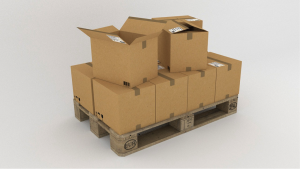Top 6 Most Important Metrics for Monitoring Supply Partner Performance
This is a guest post by Alexandra Reay.
 As a businessperson, you are going to have situations where you’re not quite sure whether your supply partner is doing what they’re supposed to do or not. You need the right metrics to measure the performance of your shipping partner.
As a businessperson, you are going to have situations where you’re not quite sure whether your supply partner is doing what they’re supposed to do or not. You need the right metrics to measure the performance of your shipping partner.
Metrics are important, not only so you know your supply partner is not shortchanging you, but also so you know your customer is getting the best experience and not being hampered by late shipments, inaccurate shipments, or canceled shipments.
That said, some metrics are too important to ignore when it comes to determining how well your supply partner is performing. Here are those metrics:
Fulfillment Rate
“This is the most obvious thing you should be looking out for,” says Ahmed Hassan, a data scientist at BestDissertation.com.
Fulfillment rate is simply how many orders the supplier has been able to fulfill in percentage terms. It is very straightforward and isn’t especially hard to measure. When it comes to an order, it has either been fulfilled, or it hasn’t.
The minimum industry standard is 98%. That’s something most suppliers don’t have a problem meeting and neither should your supplier. In the event that your supply partner has issues doing this, there is a chance that they don’t know how much inventory they have themselves. What they have is an issue with their internal inventory visibility. Other problems they may have include an inability to manage their inventory in relation to their other operations and also inability to share data in a manner that is timely.
Time to Ship
The whole idea with this metric is that you should be able to measure how long it takes to do two things: to ship an order once the supplier’s system has acknowledged that the order in fact exits, and also how long it takes them to come up with a tracking code for an order.
The thing, however, is that most retailers actually cannot do this because they don’t have comprehensive data from the carrier and also do not have standardized order and inventory data of their own.
There are, however, tools and services out there to help you standardize your data and make it much easier to track the time to ship.
Inventory Visibility
This is actually a huge problem, both for you and your supply partner alike. You might be surprised, but the inventory levels that your supply partner gives you may not be as accurate as you may like. In the United States, for example, accurate inventory visibility may be as low as 55%. Imagine the inventory levels you’re getting from your supply partner may be correct barely over half of the time.
That said, there is a direct correlation between the misalignment of inventory information and failure of order fulfillment.
Inventory visibility isn’t a single thing but has two sides: The accuracy of the inventory data and the frequency with which that data is updated.
Accuracy of the Data
This is rather difficult to ascertain, considering the fact that only the supplier can access its own inventory. You can, however, implement data solutions on your end as a retailer that auto-decrement and can catch patterns in the way inventory is updated, noting when there may be issues of inaccurate inventory data.
- The supplier may send the same inventory count every hour, which gives identical updates. This means they are just offering a filler number to meet compliance requirements.
- There may be a delay in the recognition update from the supplier. This is what happens when the supplier receives an order but does not recognize that order in the updates it provides to the retailer for its inventory.
Frequency of Updates
Ideally, a supplier should only provide an inventory update when they have a high level of confidence in the accuracy of their inventory data.
Most suppliers should be able to do this on an hourly basis. However, an update that occurs every 4 hours or even daily may be good enough, depending on your needs.
You should be careful if you tend to penalize your supply partner for sending late updates or infrequent updates since that will only encourage them to send fake updates to comply.
It’s better to have no data than to have inaccurate data. At any rate, there are plenty of B2B solutions to help you fill in the gap of no data with auto-decrements.
Shipping Upgrades
It’s a common practice among retailers to allow suppliers to upgrade their shipping levels so orders reach customers in a timely manner. If an order arrives late in the night, it can be upgraded to overnight shipping, rather than wait till the next morning, so the customer can still receive it by the deadline.
Upgrading is also helpful for especially fragile products, such as chocolate, which need to reach customers in the right condition. It is, however, an expensive practice that should be done on a need-to basis. Even with that in mind, some suppliers upgrade most orders, costing retailers insane amounts in extra shipping fees.
This is an important metric as it tells you when the supply partner is upgrading shipping as a routine measure, rather than in special circumstances.
Delivery Accuracy
There are two questions to be answered here. First, did the order reach the customer on time? Second, did the order get shipped to the right address?
There are complications to the whole process that come with the fact that the supplier has no control over the order once it has been shipped. The questions should, therefore, be changed to did the supplier ship the order in time to make the customer’s expected delivery window and did they give the correct order and address information to the carrier.
Freight Cost per Unit
This metric is an overall metric that tells you whether the supply partner is doing well on the other metrics. If the supply partner is doing their part well, then your freight cost per unit will tend downwards over time. If they’re doing badly, then it will tend upwards, and you may have to consider getting another supplier.
Conclusion
Ultimately, your supply partner is not perfect, and you should always have this in mind. However, there are things they shouldn’t skimp on and having metrics with which to measure their performance tells you when they’re doing their best and when they’re not.
This was a guest post by Alexandra Reay.
Author Bio
Alexandra Reay is an editor and professional writer at essayontime.com. She is also a regular contributor to myassignmentwriting.com.au. Alexandra is fond of horse-riding, reading, and rock music. Alexandra keeps her spirit in writing fluent articles as well.






Thanks for sharing this wonderful post. google